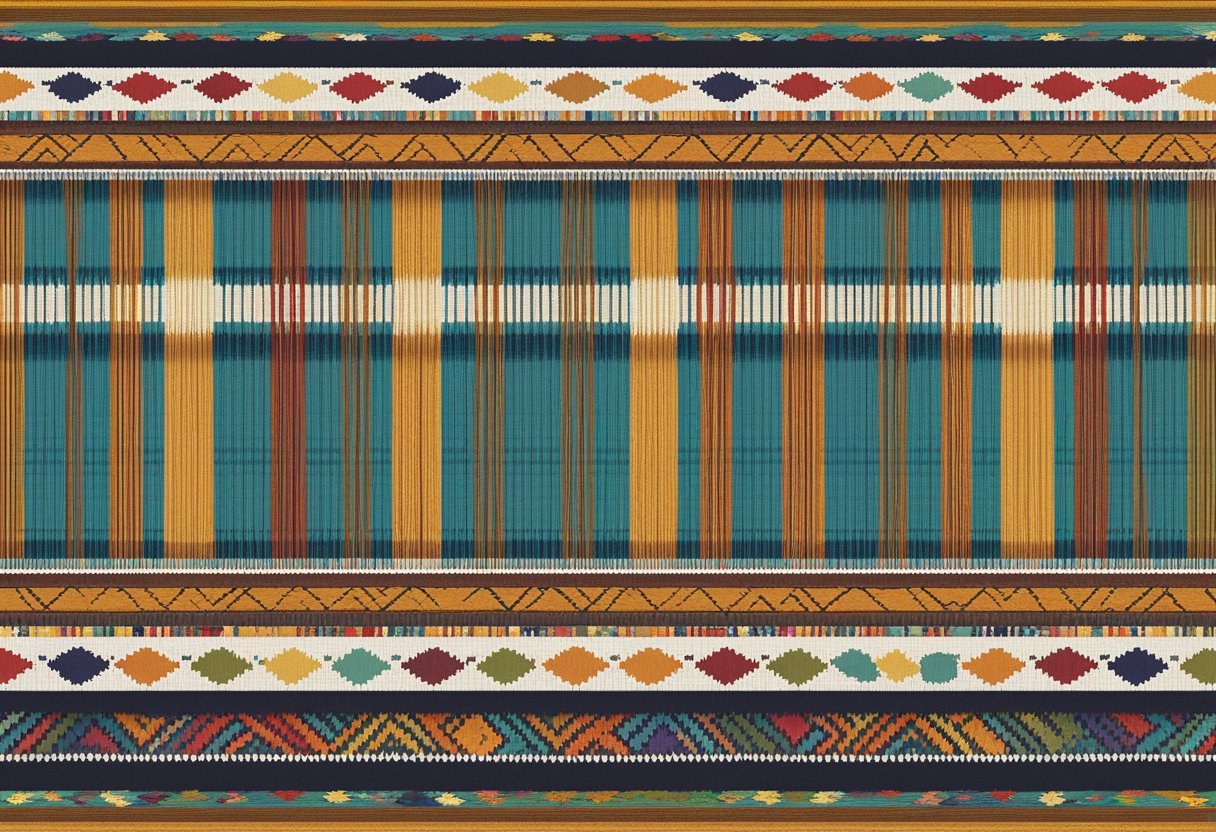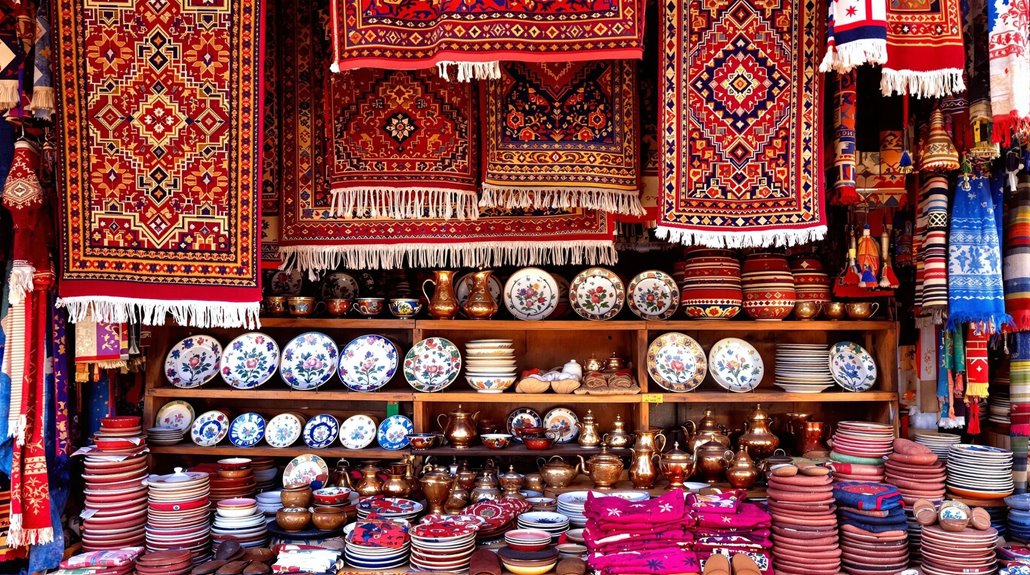What is Pirot Kilim? Origin, Design, and Cultural Significance

Pirot kilim rugs are a type of flat tapestry-woven rug traditionally crafted in the town of Pirot, located in southeastern Serbia. These kilims are known for their high quality wool, intricate motifs, and vibrant colors, making them one of the most famous Serbian brands. The rugs feature two identical sides and various symbols that often carry unique meanings.
The history of Pirot kilims is deep-rooted in the broader Balkan tradition of rug making, with influences seen across the region from Bosnia to Turkey. Pirot was once the most important rug-making center in the Balkans. The rugs are protected by geographical indication, a testament to their cultural and historical significance.
Creating a Pirot kilim is a long and intricate process. These rugs are known for their distinctive structure, comprising elements like tassels, outer and inner frames, borders, and the central field. Crafted with care and precision, each kilim stands as a unique piece of art, reflecting the rich heritage and craftsmanship of the region.
The Origin and Historical Significance of Pirot Kilim
Pirot kilim, a traditional flat tapestry-woven rug, has deep roots in Serbian culture and history. It has been a prominent part of Eastern Serbia's cultural heritage, symbolizing various historical periods and societal influences.
Pirot Kilim in Serbian Culture
Pirot, a town in southeastern Serbia, is the historic center of Pirot kilim production. The weaving tradition dates back to the Middle Ages, reflecting a rich cultural heritage. For generations, families in Pirot have passed down the intricate art of kilim weaving. This artisanal craft is a significant part of the town's cultural identity.
The Pirot kilim is protected by geographical indication since 2002, safeguarding its unique design and craftsmanship. The rugs serve both decorative and functional purposes, often used in homes and public state ceremonies, celebrating Serbian traditions. With over 122 ornaments and 96 types, each kilim tells a unique story, preserving the town's intangible cultural heritage.
Historical Use and Royal Ties
In the early 20th century, the Kilim Cooperative was founded in Pirot, enhancing the town's importance as a rug-making center. Queen Draga Mašin supported the cooperative, providing materials and financial aid. This royal endorsement elevated the Pirot kilim to a status symbol within Serbian society.
Royal courts, including those of the Obrenović and Karadjordjević dynasties, showcased Pirot kilims as symbols of prestige. These woven masterpieces were not only household items but also part of state ceremonies and royal functions. The Pirot kilim’s historical significance continues, representing both artistic excellence and cultural pride in Serbian history.
Artistic and Design Aspects of Pirot Kilims

Pirot kilims are known for their intricate use of geometric patterns, vibrant colors, and deep cultural symbolism. These rugs blend artistic skill with traditional motifs, making them both functional and decorative.
Geometric Patterns and Color
Pirot kilims feature geometric patterns that are distinctive and visually striking. Shapes such as diamonds, hexagons, and triangles are common. These patterns are not random but follow traditional designs passed down through generations.
The primary color used in Pirot kilims is red, presented in various shades. Other colors like blue, green, and yellow complement the reds, creating a balanced and harmonious look. These vibrant colors are often derived from natural dyes, enhancing the longevity and authenticity of the kilims.
Kilims are made from wool, which provides both durability and a soft texture. The wool is carefully woven on vertical looms, a process that showcases the weavers' artistic skills and attention to detail. This weaving technique ensures that each kilim is unique, with slight variations that add to its charm.
Symbolism and Cultural Reflection
The ornaments and motifs in Pirot kilims carry deep cultural significance. Tulips, roses, and other flowers are common patterns, symbolizing nature and beauty. Some kilims also feature figural ornaments, such as animals or human figures, though these are less common.
Mirrors or mirrored patterns appear in some designs, reflecting a belief in warding off evil spirits. Other motifs include vegetal patterns and intricate borders that frame the central design, adding layers of meaning and enriching the visual appeal.
These symbols reflect the rich tradition and cultural heritage of the region. The designs often tell stories or convey values that resonate with the people of Pirot. Each kilim is not just a rug but a piece of art that embodies the history and soul of the community it comes from.
Weaving Techniques and Materials

Pirot kilim rugs are crafted using age-old techniques that emphasize quality and tradition. The rugs employ traditional weaving practices and high-quality natural dyes, primarily from wool.
Traditional Weaving Practices
Pirot kilims are woven using a flat tapestry technique. Artisans typically use vertical looms to make these rugs. Each rug features intricate patterns and uses a supplementary-weft weaving method. This approach ensures durability and allows the creation of detailed designs.
Weavers in Pirot follow patterns passed down through generations. The rug-making process includes setting up the loom, preparing wool, and weaving the designs. Precision is key, so each weaver's skill significantly impacts the final product.
Natural Dyes and Wool Quality
Natural dyes are crucial for achieving vibrant colors in Pirot kilims. Plant dyes are often used, extracted from local plants and flowers. These dyes are preferred for their rich, lasting colors. Sometimes, synthetic aniline colorings are also used but natural dyes are still dominant.
Wool is the primary material for Pirot kilims. High-quality wool is chosen for its strength and texture. Wool’s natural resilience makes the rugs durable and comfortable. The quality of wool and dyes used significantly impacts the rug's appearance and longevity.
The Socio-economic Role of Pirot Kilim

Pirot Kilims play a significant role in the local economy and international trade. These handwoven rugs from Pirot have a history of contributing to both employment and cultural heritage.
Trade and Export
Pirot Kilims are recognized globally for their quality and unique designs. They are heavily exported, reaching markets in Europe, particularly neighboring countries like Bulgaria, and beyond. This export activity boosts the local economy by bringing in foreign revenue.
The geographical indication status of Pirot Kilims also helps in securing a solid market position, ensuring exclusivity and premium pricing. This recognition makes them desirable items among collectors and enthusiasts, increasing their demand and supporting sustained production.
Kilim Production and Local Economy
The production of Pirot Kilims involves many local artisans, providing jobs and supporting families in Pirot. Weaving is done on vertical looms, often by skilled craftsmen and women who have inherited the techniques passed down through generations.
Local cooperatives, established over a century ago, play a central role in organizing the supply of materials and distribution of the finished rugs. These cooperatives ensure fair wages and good working conditions, further integrating Pirot Kilim production into the local economy.
By engaging a substantial portion of the population in weaving and related activities, Pirot Kilims remain not only a cultural symbol but a key economic driver for the region.
Legal and Geographical Indications
Pirot kilims are not only a symbol of Serbian cultural heritage but also protected under intellectual property laws. These protections ensure that the unique features and origins of these kilims are preserved.
Intellectual Property Rights
In 2002, Pirot kilims were protected by a Geographical Indication (GI), a label indicating that the product comes from a specific place known for certain qualities. This GI protection covers various handcrafted textiles, including rugs, curtains, and blankets, ensuring authenticity.
The Intellectual Property Office of Serbia recognized the importance of these kilims. By securing GI status, it ensures that only rugs made in Pirot using traditional methods can be marketed as Pirot kilims. This not only protects the artisans but also the heritage embedded in each piece.
This acknowledgment also preserves the techniques and designs that have been handed down through generations. Serbian Cyrillic is often used in labeling, adding a layer of national identity to these cherished items.
Pirot Kilims in Modern Context
Pirot kilims, renowned for their high quality and unique designs, continue to receive significant attention and appreciation. In the modern context, these traditional rugs are recognized globally and conserved as vital pieces of cultural heritage. Additionally, they are admired and utilized in various contemporary settings.
Global Recognition and Preservation Efforts
Pirot kilims have achieved notable global recognition. In 2002, they were protected by geographical indication, highlighting their cultural and historical significance. These kilims are listed as Intangible Cultural Heritage of Serbia, ensuring their craftsmanship is preserved.
Efforts to preserve Pirot kilims involve both local and national initiatives. The cooperative of kilim weavers from Pirot, founded 122 years ago, plays a crucial role. Their work ensures these rugs remain an integral part of Serbia's cultural heritage.
Contemporary Usage and Admiration
Today, Pirot kilims are not only historical artifacts but also elegant pieces used in modern decor. With their intricate designs and dual-sided surfaces, they appeal to contemporary admirers seeking unique and culturally rich home decorations.
These rugs are often found in art galleries, museums, and upscale homes. Their high quality and symbolic motifs continue to captivate designers and collectors. The use of high-quality wool from Stara planina ensures that each piece is both durable and beautiful, maintaining its significance in the modern world.
Regional Influences and Variations
Pirot kilims share many features with other rugs from the Balkan and oriental regions. Understanding these similarities and differences can highlight the unique characteristics and traditions of Pirot kilims.
Comparison with Balkan and Oriental Rug Making
Pirot kilims, originating from southeastern Serbia, display unique motifs and production techniques. They are often compared to Balkan rugs such as those from Bosnia and Şarköy (Sharkoy), as well as Oriental rugs. Like many Balkan rugs, Pirot kilims use high-quality wool and have intricate designs.
The Balkan region has a rich tradition of rug making, with other notable examples including Chiprovtsi woolen kilims from Bulgaria. These kilims feature geometric patterns and vibrant colors, similar to Pirot kilims. Yet, Pirot kilims stand out due to their two identical sides and a broad range of symbols.
In terms of Oriental rugs, Pirot kilims share the detailed and labor-intensive weaving processes. Unlike Turkish rugs from the region of Turkey, which often feature floral motifs, Pirot kilims emphasize geometric patterns and symbolism. This contrast showcases the diverse cultural influences that shape the rich tapestry of rug-making traditions across these regions.




